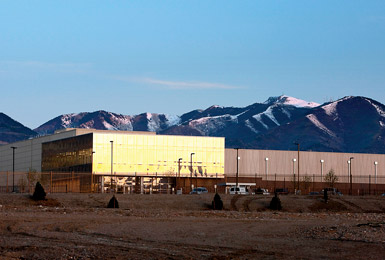Data Centers: Locating Mission Critical Assets
A business of any size that needs to locate a data center should address these key considerations to select the right site.
March 2011

• Reliability goals (Tier I-Tier IV and hybrids in between)
• Physical size with built-in growth
• Utility requirements
• Network requirements
• Sustainable goals
• Desired relationship to the served facilities
• Security level
• Personnel and staffing issues
• Disaster recovery plan
In many ways, these basic issues do not change whether you are trying to locate a new data center in the building next door or in remote location around the globe.
In Your Building
When you're looking to locate a mission-critical project in your building, you need to start with power. Is there available utility service to the building? Depending on the Tier level you need, an additional, separate feed may be required. The building must be physically able to handle the data center. The floor should have a minimum, live load capacity of 150 pounds-per-square-foot, and you will need a clear height of 13 feet for a raised-access, floor-cooled data center. In-row cooling solutions may work with less height. The selected area should have at least one exterior wall. It usually makes sense to locate next to a "soft" function that could be relocated if the data center expands. Roof drain, sanitary drains, and pressurized water systems should be avoided in the data center. With severe weather, basements and low-lying areas are poor locations for a data center. Many efficient engineering systems require more space and exterior access. In office buildings and hospitals, you will often see data centers jammed into leftover basement space in the building core. This space will work for a short time, but it becomes difficult to expand. Security and staffing issues should also play a role in your decision. Avoid locations near lobbies, kitchens, industrial uses, and dusty environments. Data centers employ critical and highly skilled people who are often very busy. A location near IT staff must be considered for situation response times.
On Your Campus
In a suburban campus, clients should consider locating mission critical assets away from the campus center or entrance. Sites are harder to find in an urban environment. The center limits expansion as the campus grows and changes. Hospitals often suffer from this issue when they choose a central location to save cable length. These central locations are good for passive network rooms and telecom closets. In many cases, the perimeter is a better location for a data center, provided it meets security requirements.
In a campus, it is too easy to create buildings that fix many problems. Data centers get added last minute to the program of a larger building. On several occasions, RTKL has been asked to fix failing data centers located in the basement of a campus's main building, usually next to the kitchen or loading dock, with floors of wet lab space above. Instead, a stand-alone data center, perhaps collocated with IT functions, is a good option. It addresses security, allows the campus to grow freely, and remains unaffected by maintenance shutdowns.
Where In the World
When your site search goes regional, national, or global, the issues get more intense. These are just some considerations that arise:
• Network speed or latency back to your other facilities
• Local taxes and tax incentives
• Sustainability incentives
• Electrical grids
• Utility rates
• Natural risks (weather, fire, flood, earthquake)
• Manmade risks (highways, train lines, flight paths, nuclear power plants)
• Neighbor risks
• Access to qualified personnel
• Operating tragedy (multiple hot sites, hot site/cold site)
• Federal laws the effect banking information
• Civil and environmental issues
Project Announcements
Apex Plastics Opens Expanded Production Plant In Brookfield, Missouri
09/22/2014
Japan-Based Bridgestone Rubber-BSA Opens Biorubber Process Research Center In Mesa, Arizona
09/22/2014
SpencerARL Expands Its Plattsburgh, New York, Manufacturing Facility
09/22/2014
Hill International, Inc. Relocates Corporate Headquarters To Philadelphia, Pennsylvania
09/22/2014
Prysmian Group Plans $8.2 Million Expansion At Abbeville County, South Carolina, Manufacturing Center
09/22/2014
Japan-Based Kowa Kentucky Plans $8.3 Million Manufacturing Facility In Corbin, Kentucky
09/22/2014
Most Read
-
2025’s Top States for Business: How the Winners Are Outpacing the Rest
Q3 2025
-
The Compliance Reckoning Is Here
Q3 2025
-
Around the Horn: Data Center Supply Chains — What's Next?
Q3 2025
-
How Consumer Trends Are Reshaping Food Facilities
Q3 2025
-
First Person: Filter King’s Expansion Playbook
Q3 2025
-
Rethinking Auto Site Strategy in the Age of Tariffs and Powertrain Shifts
Q3 2025
-
How Canada Stays Competitive
Q3 2025